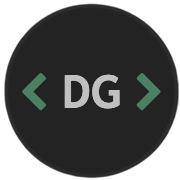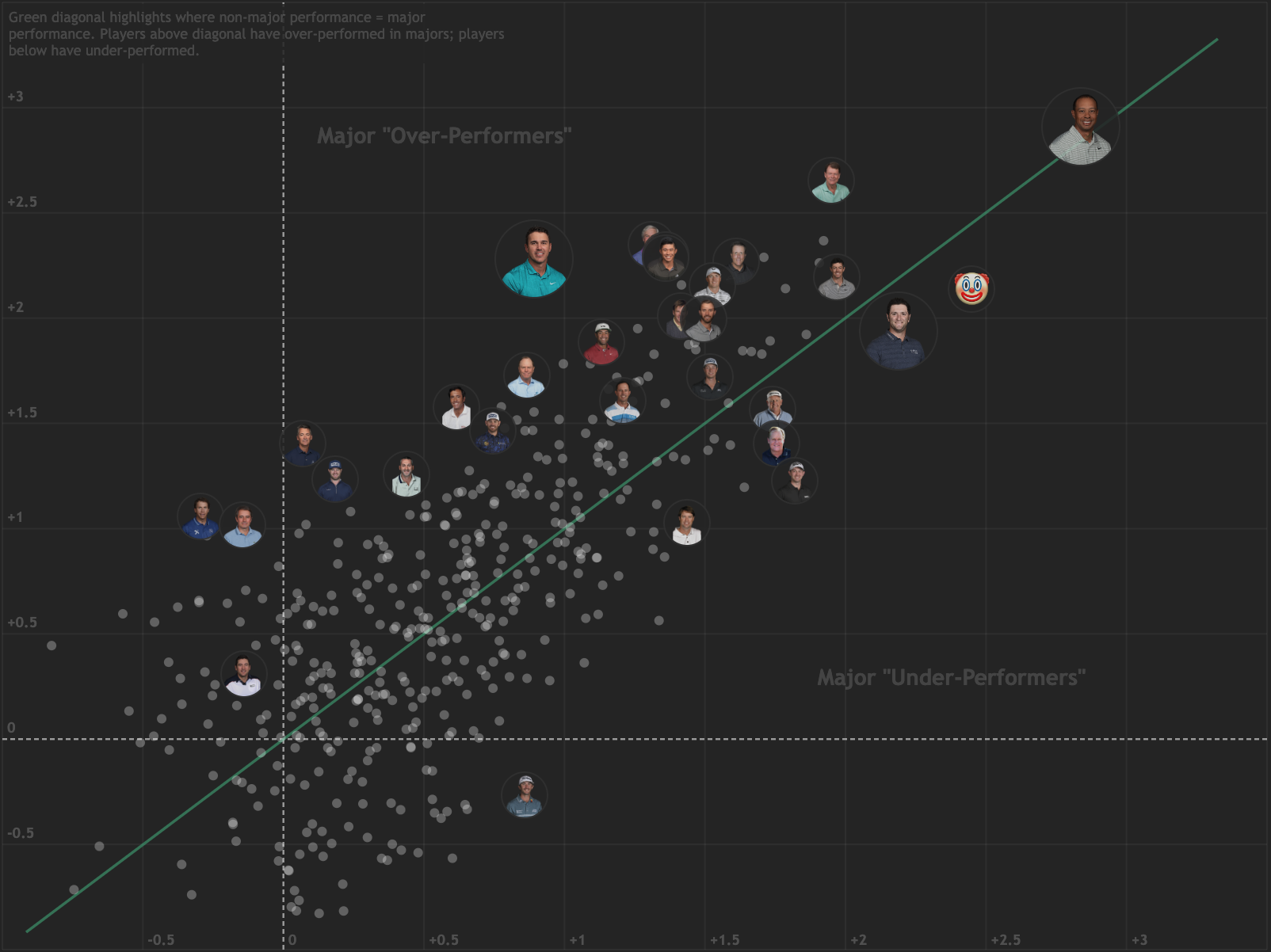
 I.T.N. No. 17
I.T.N. No. 17PUBLISHED March 4, 2020
Inside The Numbers ...
is a brief numerical summary of the current happenings in the world golf, published every Monday — hopefully.
4.7% MASTERS WIN PROBABILITY
In case you didn’t know, we’ve been tracking the outright odds on a few books leading into The Masters (this is the last week before Masters odds are paywalled!), alongside our model predictions.
If you came here for a little betting advice, you’re in luck! Here’s how Hideki’s odds have evolved over the past month:
Since the start of 2020, Matsuyama has been playing some very solid golf — but hasn’t quite done enough to really catch the eye of the betting markets (his best finish was T5 at Genesis).
Furthermore, he’s primarily been gaining strokes through elite ball striking, which our model values more in making predictions, especially at Augusta National.
For these reasons our model thinks the market is sleeping on Deki, and prices him at just under 5% to win The Masters, well above the implied probability offered at some popular sportsbooks.
+0.08 STROKES PER ROUND
At this week’s Arnold Palmer Invitational, the largest course fit adjustment we are making to a golfer’s baseline skill is just +0.08 strokes per round.
At first reflection this is surprising, given the shape of Bay Hill’s radar plot:
Both driving distance and driving accuracy are more predictive of performance at Bay Hill than the average PGA Tour course; that is to say we should expect players in this week’s field with above-average distance and/or accuracy to perform above their baseline skill levels. However, driving distance and driving accuracy are negatively correlated across players, and therefore the course fit adjustments tend to cancel out this week. This is an interesting point: a PGA Tour course can end up not favouring any individual player by being average in every dimension or, as in the case of Bay Hill, by emphasizing skills that tend to be possessed by different players.
0.5 STROKES BETTER PER ROUND
Much has been made of Tommy Fleetwood’s “inability” to win on American soil after another close call last Sunday at PGA National.
One potential explanation for this is that he hasn’t performed as well in the United States.
Well, according to our true strokes gained metric, he’s actually performed roughly 0.5 strokes per round better on the PGA Tour than on the European circuit since joining in 2017 (excluding majors and WGCs from each calculation).
Given this, his lack of wins must be due to either tougher competition in America (which we know to be true, see next paragraph) or that he simply hasn’t quite been able to finish one off.
This could be due to bad luck or, as Johnny Miller would have put it last Sunday, choking!
9.1% WIN PROBABILITY
Paul Azinger received a lot of heat for his comments on Sunday’s telecast regarding the quality (or lack thereof) of European tour fields.
While Azinger probably should have worded things differently, there was some truth to what he said.
According to our estimates of field strength, the average European tour field is about 1 stroke worse per round than the average PGA Tour field.
For context, there is a 1 stroke difference between our 75th and 250th ranked players in the world.
Our preferred measures of field strength are ‘difficulty-to-win’ measures, which indicate how likely it is for a player of a given skill level (e.g. a ‘Top 5’ player in the world) to beat the field.
At the 2019 BMW PGA Championship, the European Tour’s flagship event, we estimated that a Top 5 player would beat this field 9.1% of the time.
Listed below are the PGA Tour events during the 2019 calendar year that were closest to this 9.1% figure; we can see that the BMW PGA is most similar to a slightly below-average field strength PGA Tour event.
I.T.N. ARCHIVE
RECOMMENDED BLOGS
Recent Blog Posts
Model Talk Blog
Does our model overvalue leaders?

 Data Visualization Blog
Data Visualization Blog
Skill Distribution of Major Champions










